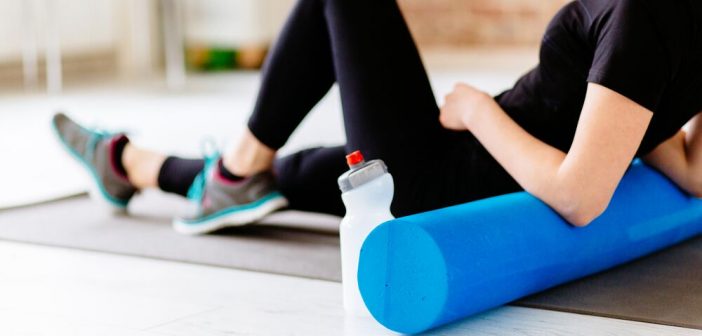So, you’ve decided to try this new thing you’ve heard about known as foam rolling. Honestly, as far as we’re concerned, there should be a foam roller in every gym bag. Not only does using a foam roller improve overall flexibility, range of motion and blood flow, but it allows you to give yourself a deep-tissue massage at a fraction of the cost! A foam roller can do more harm than good when not used correctly. So here are a few tips to ensure you get the most out of every time you use this piece of equipment.
How to Correctly Use a Foam Roller:
Do: Ensure you’re well hydrated before foam rolling
Don’t: Foam roll if you haven’t had something to drink in the last while
If you prefer to work out first thing in the mornings, make sure that you drink a glass or two well before doing so. This will hydrate the muscle tissue, which will make your muscles more pliable and receptive to the foam rolling.
Dehydrated muscle tissue becomes sticky, which could lead to adhesions and movement dysfunction. If this happens on a continuous basis, this could very well lead to muscular injury. So work your muscles optimally when you’re well hydrated and after a light stretch. This will ensure that you keep your body functioning optimally.
Do: Apply pressure gently at first, getting progressively harder
Don’t: Over-apply pressure as this could lead to injury
No matter how good your muscles feel while you’re foam rolling, avoid applying too much pressure at all costs. Like most things, muscle tissue will break apart when placed under enough force. Going too hard on your muscles might damage them further and could result in exercise down-time as this will bruise your muscles which will cause them not to function properly.
Start off with light pressure, increasing it over time throughout your foam rolling workout. Listen to your muscles, they’ll tell you when they’re not happy. When you feel the slightest bit of pain, stop immediately.
Do: Move on to the next sore spot once pain disperses (by 50-75%)
Don’t: Work on one muscle for too long; roll each muscle between 8 and 12 times
Resist the urge to foam roll a sore spot until it goes numb. We understand your need for reliefbut when muscles go numb, it may mean that a nerve is pinched. And if this continues, it could lead to damage within your nervous system.
As concentrating on one muscle group for too long could cause more harm than good work a muscle for a maximum of 12 rolls, then move on even if you only feel a minor reduction in pain. You can always allow the area to recover for a day and roll it once more.
Do: Seek professional help if muscles are excruciatingly painful when rolling
Don’t: Ignore very painful muscles, as this could be a serious issue
Like many things in life, foam rolling involves a little bit of pain. However, this pain shouldn’t be so bad that you can barely roll over the spot without wincing. If you’re working with a foam roller correctly, that is slowly and with only moderate pressure, there’s no reason you should be in excruciating pain. Seek a personal trainers advice should you find your foam rolling journey involving more pain than gain.
Do: Pick a foam roller that suits your experience level
Don’t: Buy the most expensive foam roller there is
Seriously, foam rollers can end up compressing the muscle tissue too much and may even lead to bruising. If you’re a beginner at foam rolling, you’ll want to get one that’s less firm and with a smooth surface. As you gain experience, you can look at getting harder, more textured foam rollers that offer deeper muscle massages and that can be used to pin-point specific smaller problem areas.
As you can see, the benefits of foam rolling are countless. If you’re not sure about whether or not you should be using a foam roller to work out the problematic areas in your muscles, why not try out a foam roller at your local fitness facility. These are very good quality and will help you make up your mind as to if foam rolling is for you!




